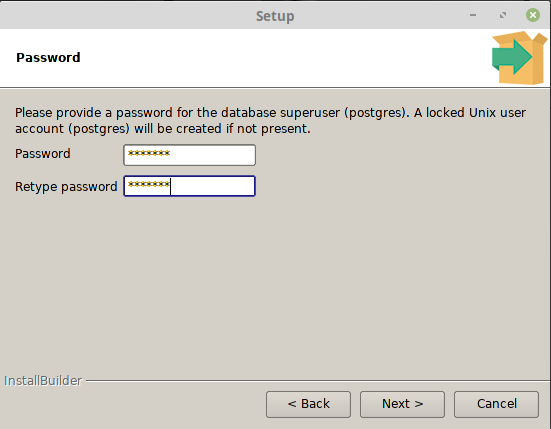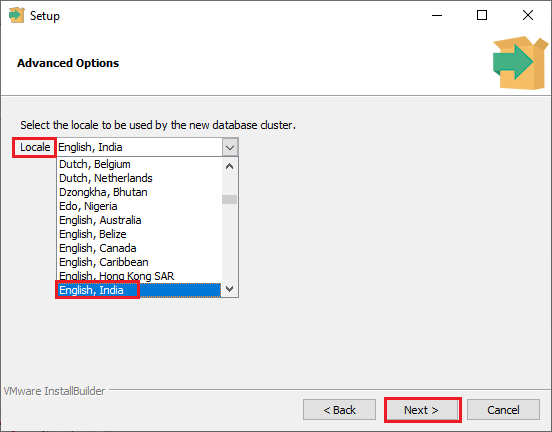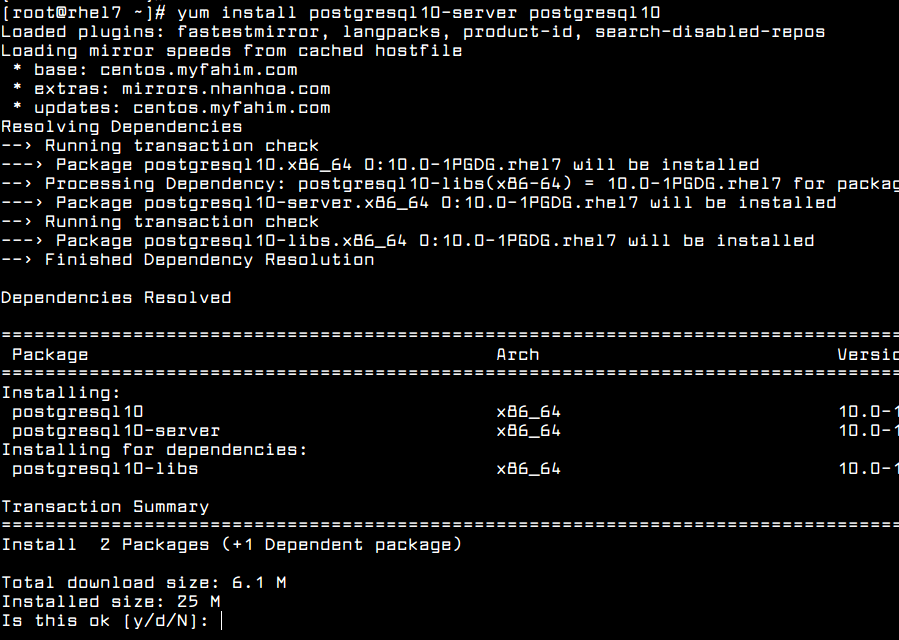
Though it may not be fully supported, the same packages work on non-LTS versions as well by using the closest LTS version. PostgreSQL Apt Repository supports the current LTS versions of Ubuntu, i.e., 20.04, 18.04 and 16.04.
#INSTALL POSTGRESQL UPDATE#
To use the default supported version provided by Ubuntu’s repository, run: $ sudo apt-get update
#INSTALL POSTGRESQL INSTALL#
You have got the choice to install and use the version available by default with your version of Ubuntu and supported for its lifetime or to use a specific version by adding the PostgreSQL repository and installing the same. PostgreSQL is available for all flavors and versions of Ubuntu. We’re going to cover the installation of PostgreSQL on common platforms in this article. It is ACID-compliant and offers support for powerful addons like the popular PostGIS geospatial database extender. Its consistent performance over the years has proved its integrity, architecture, and extensibility for enterprise use.

It dates back to 1986 as part of the POSTGRES project at the University of California, Berkeley, and carries 30 years of active development on its core platform. Run the below command from the postgres shell to check the details of the connection.PostgreSQL is one of the popular, cross-platform, open-source object-relational database systems which is robust, high performing, and reliable with a strong community. Run the below command to access PostgreSQL and launch the postgres shell program.

Once the installation is completed, then run the below commands to start, enable and check the status of PostgreSQL. # apt-get install postgresql postgresql-contrib Once added the PostgreSQL repository and updated the server, then run the below command to install the PostgreSQL on your server. Now update the server to effect the changes. # sh -c 'echo "deb `lsb_release -cs`-pgdg main" > /etc/apt//pgdg.list' # wget -quiet -O - | sudo apt-key add -Īdd the PostgreSQL repository by using the below command. Import the GPG repository key with the below commands: # apt-get install wget ca-certificates Run the below commands to add PostgreSQL Repository and it will combine with your Linux system and offers automatic updates for all supported versions of PostgreSQL on your Ubuntu server. You can use the below command to change the password for user postgres for security purposes.

Run the below command to verify the installation. Once the database initialize completed, then run the below commands to start, enable and check the status of PostgreSQL. Initialize PostgreSQL Database to complete the database installation. # yum install postgresql-server postgresql Once added to the PostgreSQL yum repository, then run the below command to install the PostgreSQL on your server. Run the below command to add PostgreSQL Yum Repository and it will combine with your Linux system and offers automatic updates for all supported versions of PostgreSQL on your CentOS server.

#INSTALL POSTGRESQL HOW TO#
This article will guide you on how to install the PostgreSQL on CentOS, Ubuntu & Debian servers. It is an enterprise-level database system that offers high levels of resistance, integrity and accuracy. PostgreSQL is a highly scalable, powerful free open-source relational database management system that runs on operating systems such as Unix, including Linux and Windows OS.


 0 kommentar(er)
0 kommentar(er)
